
Sonoma Botanical Garden is a 501(c)3 private nonprofit education and research botanical garden home to one of the largest collections of scientifically documented, wild-source Asian plants in North America and Europe.

The University of California Botanical Garden is a 34-acre botanical garden located on the University of California, Berkeley campus, in Strawberry Canyon. The Garden is in the Berkeley Hills, inside the city boundary of Oakland, with views overlooking the San Francisco Bay. It is one of the most diverse plant collections in the United States, and famous for its large number of rare and endangered species.

Drosera adelae, commonly known as the lance-leaved sundew, is a carnivorous plant in the genus Drosera that is endemic to Queensland, Australia.

Adrian Slack was a landscape gardener, plantsman, author and authority on carnivorous plants. He won 5 gold medals at the Chelsea Flower Show, and authored two books: Carnivorous Plants and Insect-Eating Plants and How to Grow Them.

Katherine Olivia "Kate" Sessions was an American botanist, horticulturalist, and landscape architect closely associated with San Diego, California, and known as the "Mother of Balboa Park."
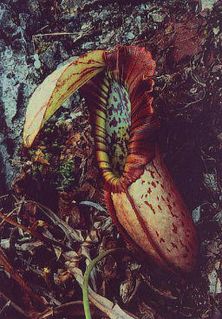
Nepenthes northiana, or Miss North's pitcher-plant, is a tropical pitcher plant endemic to Borneo, where it grows at elevations ranging from 0 to 500 m above sea level. The specific epithet northiana honours Marianne North, who first illustrated the species. Nepenthes northiana is one of the most famous Nepenthes, and its discovery in the latter half of the 19th century contributed to Sarawak's reputation as a land of spectacular exotic plants.
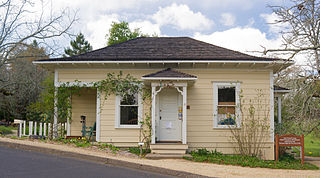
Luther Burbank's Gold Ridge Experiment Farm is the official name of the 3 acres (12,000 m2) that remain of the farm originally purchased in 1885 by famed plant breeder Luther Burbank (1849-1926) in an area of Sebastopol, California, formerly known as the "Gold Ridge District". To these 10 acres (40,000 m2), Burbank added 5 acres (20,000 m2) in 1904 and 3.046 acres (12,330 m2) in 1906 until, in 1923, failing health compelled him to sell-off 3.046 acres (12,330 m2) of his holdings. Burbank died in 1926.

Carnivorous plants are plants that derive some or most of their nutrients from trapping and consuming animals or protozoans, typically insects and other arthropods. However, carnivorous plants generate energy from photosynthesis. Carnivorous plants have adapted to grow in places where the soil is thin or poor in nutrients, especially nitrogen, such as acidic bogs. Charles Darwin wrote Insectivorous Plants, the first well-known treatise on carnivorous plants, in 1875. Carnivorous plants can be found on all continents except Antarctica, as well as many Pacific islands.

Drosera slackii is a subtropical sundew native to the Cape Provinces of South Africa. It forms rosettes that range from to two to four inches in diameter, and produces pink flowers. It is named after the British plantsman and author Adrian Slack (1933-2018).

Drosera andersoniana, the sturdy sundew, is an erect perennial tuberous species in the genus Drosera that is endemic to Western Australia. It produces a basal rosette of leaves similar to that of D. peltata and the stem grows to 8–25 cm (3–10 in). Its pink-white to red flowers emerge from August to September. D. andersoniana grows in loamy soils near granite outcrops.
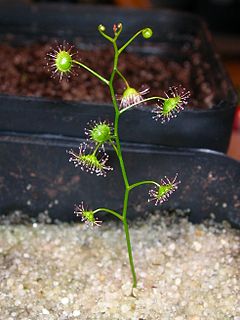
Drosera menziesii, the pink rainbow, is an erect or scrambling perennial tuberous species in the carnivorous plant genus Drosera. It is endemic to Western Australia and grows in a variety of habitats, including winter-wet depressions, swamps, and granite outcrops in clay or peat sand soils or loam. D. menziesii produces small, circular carnivorous leaves along an undulating erect stem that can be .05–1.1 m (0.2–3.6 ft) high. Its pink flowers emerge from July to November.

Ernie George Wasson is an American gardener, horticulturist and author.
Tony Avent is an American horticulturist and plantsman. He and wife and business partner, Anita Avent, own Plant Delights Nursery and Juniper Level Botanic Garden in Raleigh, North Carolina. In addition, he is a well-known plant explorer, author and public speaker.

The Savage Garden: Cultivating Carnivorous Plants is a carnivorous plant cultivation guide by Peter D'Amato, horticulturist and owner of California Carnivores nursery. It was originally published in 1998 by Ten Speed Press, and reprinted in 2004. A revised edition was released in July 2013.
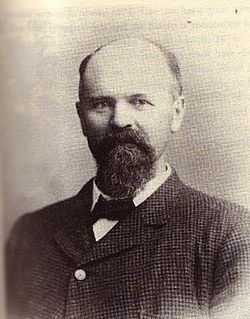
The California Nursery Company was established in Niles, California, and incorporated in 1884 by John Rock, R.D. Fox, and others. The nursery sold fruit trees, nut trees, ornamental shrubs and trees, and roses. It was responsible for introducing new hybrids created by such important West Coast breeders as Luther Burbank and Albert Etter.
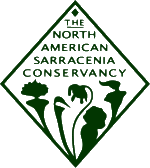
The North American Sarracenia Conservancy (NASC) is a 501(c)(3) non-profit organization dedicated to habitat conservation. Founded in 2005, the Conservancy was granted tax-exempt status in January 2009. The main focus of the Conservancy is the conservation and preservation of the natural habitats and genetic diversity of the Sarracenia pitcher plants. Sarracenia is a genus of carnivorous plant that trap prey in tube-shaped, hollow leaves, which in some species hold rain water. Species range from the southeastern United States, up the coastal plain, and into the Great Lakes and Canada. Within their range the plants naturally occur in sphagnum bogs, swamps, fens, and flooded plains.

California Carnivores is a plant nursery in Sebastopol, California in the United States. Specializing in the cultivation of carnivorous plants, CC is home to one of the largest collections of imported carnivorous plants in North America, and possibly the world, with more than 1,000 types of imported plant and dozen of varieties for sale in the retail section of the nursery.
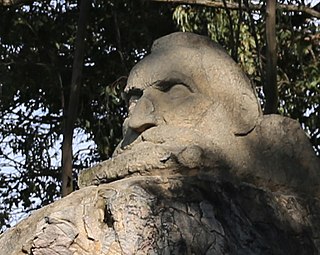
Francesco Franceschi (1843–1924) – known in Italy by his title and birth name of CavalierEmanuele Orazio Fenzi – was an Italian banker and horticulturist who spent part of his later career in the United States, where his efforts contributed to the introduction of new plant species in southern California.

William A. McNamara is an American horticulturist and expert in the field of plant conservation and the flora of Asia. Now retired, he was the President and Executive Director of Quarryhill Botanical Garden, a 25-acre wild woodland garden in Northern California's Sonoma Valley featuring wild-sourced plants from temperate East Asia. In 2017, he and Quarryhill Botanical Garden celebrated their 30th Anniversary. He retired from the Garden in October of 2019.

Herbert R. Schaal is an American landscape architect, educator, and firm leader notable for the broad range and diversity of his projects, including regional studies, national parks, corporate and university campuses, site planning, botanical gardens, downtowns, highways, cemeteries, and public and private gardens. Schaal is one of the first landscape architects to design children's gardens, beginning in the 1990s with Gateway Elementary, Gateway Middle, and Gateway Michael Elementary school grounds in St. Louis, Missouri, the Hershey Children's Garden at the Cleveland Botanical Gardens, and Red Butte Garden and Arboretum.



















